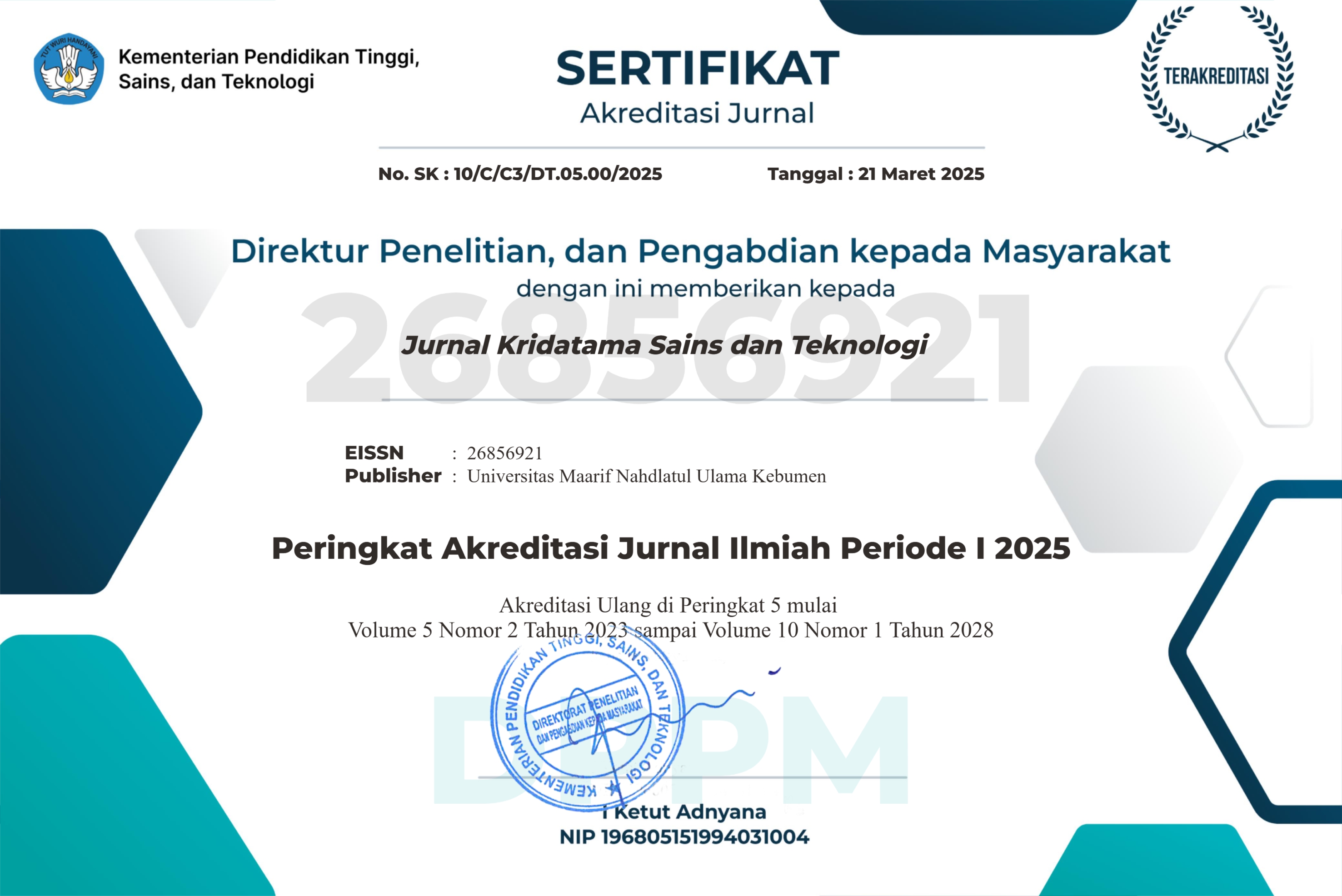Implementasi Sistem Monitoring Pertumbuhan Tanaman Hidroponik Berbasis Sensor Konduktivitas dan LabVIEW
DOI:
https://doi.org/10.53863/kst.v7i02.1787Keywords:
hydroponics, EC monitoring, LabVIEW, data acquisition system, appropriate technology.Abstract
This community service project is an implementation of research findings. Hydroponic farming offers an innovative solution to land scarcity and soil degradation in urban areas. Its success heavily depends on the management of nutrient solution quality, particularly in terms of electrical conductivity (EC) and temperature. In the local hydroponic farm, residents were still using manual methods that are inaccurate and lack data logging capabilities. Therefore, an EC and temperature sensor-based monitoring system integrated with LabVIEW was developed. The system is designed to provide real-time readings, color-coded visual indicators, and automatic data logging. Testing was conducted over six days at a lettuce hydroponic installation, yielding an average EC deviation of 3.2% compared to a reference device. The measured temperature range remained within the ideal range (26.1–28.3°C). The system operated stably with a 1-second reading interval, low power consumption, and compatibility with local conditions. Positive user feedback highlighted its ease of use and practical benefits in plant maintenance decision-making. Through this appropriate technology approach, the system has the potential to serve as a model for smart household-scale agricultural development in urban areas
References
Astuti, N., & Widodo, T. (2023). Design and implementation of EC monitoring system using Arduino and LabVIEW. International Journal of Engineering Technology, 8(2), 134–142.
Hasan, M., & Fikri, A. (2022). Pengembangan sistem monitoring nutrisi hidroponik dengan sensor EC dan DS18B20 berbasis Arduino. Jurnal Riset Teknologi dan Inovasi, 5(1), 88–96.
Junaidi, A., & Lestari, P. (2021). Optimalisasi nilai EC dan pH pada sistem hidroponik tertutup. Jurnal Hortikultura Tropika, 5(2), 77–85.
Kurniawan, H., Saputra, R., & Amalia, D. (2023). IoT-based hydroponic monitoring system using NodeMCU and Blynk platform. International Journal of Smart Agriculture, 5(1), 12–19.
Prabowo, S., & Nugraha, A. (2023). Implementasi LabVIEW dalam sistem akuisisi data sensor untuk aplikasi pertanian cerdas. Jurnal Teknologi Elektro dan Komputer, 11(3), 215–223.
Putra, R. D., & Prabowo, H. (2022). Desain sistem monitoring hidroponik menggunakan Arduino dan sensor EC TDS. Jurnal Elektro dan Teknologi Informasi, 10(1), 31–39.
Rahman, A., Yusuf, M., & Hidayat, T. (2023). Monitoring nutrisi tanaman hidroponik menggunakan sensor EC berbasis Arduino. Jurnal Teknologi Pertanian, 18(1), 45–52. https://doi.org/10.1234/jtp.v18i1.2023
Sari, L. P., & Ramadhan, M. (2023). Evaluasi sistem monitoring hidroponik berbasis LabVIEW pada skala rumah tangga. Jurnal Teknik Elektro dan Otomasi, 9(1), 21–28.
Setiawan, D., Anindita, P., & Yulianto, D. (2022). Evaluasi sistem pemupukan pada hidroponik skala rumah tangga. Jurnal Ilmu Pertanian Terapan, 7(3), 120–126.
Wahyuni, S., & Kurniawan, T. (2023). Pengaruh EC terhadap produksi tanaman pakcoy pada sistem hidroponik NFT. Jurnal Agrotek Tropika, 8(2), 95–103.
Wijaya, M. T., Fadillah, S., & Ramadhan, L. (2023). Smart hydroponic system with mobile notification using Firebase. Jurnal Teknologi dan Rekayasa Sistem, 6(4), 200–207.
Downloads
Published
How to Cite
Issue
Section
License
Copyright (c) 2025 Nuralam Nuralam, Rizdam Firly Muzakki, Sri Lestari Kusumastuti, Hariyanto Hariyanto

This work is licensed under a Creative Commons Attribution-ShareAlike 4.0 International License.
Authors retain copyright and grant the journal right of first publication with the work simultaneously licensed under a Creative Commons Attribution-ShareAlike 4.0 International License that allows others to share the work with an acknowledgment of the work’s authorship and initial publication in this journal

















